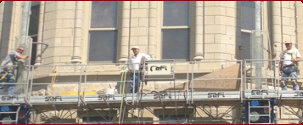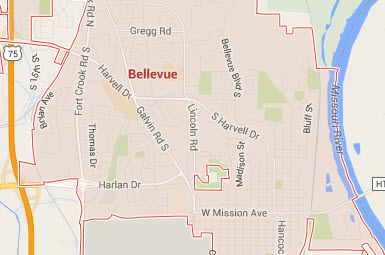Masonry Cleaning
There are many masonry cleaners on the market. Because of different compositions of brick, block and stone they require specific types of cleaners for each.
When cleaning historical masonry we have had great success with hot water at moderate pressure that often can eliminate using any cleaners. Historical masonry and new masonry require different types of cleaners. Back in the day a common cleaner for all masonry was muriatic acid. It is very caustic and could be harmful to the masonry and the person using it.
Many historical buildings have had abrasive cleaning such a sandblasting and this can be very harmful as it removes the surface of the masonry. Imagine a brick as a loaf of bread where the exterior is hard and once you sandblast and remove the hard exterior of the brick you are now into the soft part of the brick which is exposed to the elements since the protective layer has been removed. When this happens water penetration occurs more rapidly and can accelerate deterioration.
While masonry is one of the most durable of historical building materials it is easy to damage with harsh chemicals, abrasive cleaning, improper maintenance and repair techniques.
Before we clean it is important to determine why we are cleaning and is it appropriate, especially for historical masonry. Some of the masonry cleaning guidelines are as follows.
Improve the appearance by removing dirt, non historical paint, biological growth, etc.
Retard deterioration by removing soiling materials that trap water in the masonry.
Clean surface to accurately match mortar for repointing or patching mortars.
Identify the type of material to be cleaned. Many times masonry buildings will require several cleaners on the same project.
Choose the appropriate cleaner. Never use abrasive cleaning techniques. Always clean with the gentlest means possible.
Know your surface. Cleaners for concrete products and manufactured stone are different from brick cleaners. Cleaners for limestone and sandstone also differ.
Always test a small area before cleaning the overall project.
Use the mildest cleaner and dilution that stills cleans effectively.
On new masonry clean early and quickly. The long mortar is on the wall the harder it is to clean.
Never clean with raw acid and always use plenty of water when rinsing.
Whether cleaning new or historical masonry we have you covered. We can remove efflorescence, paint, and various stains from brick, limestone, sandstone, concrete and pavers.



